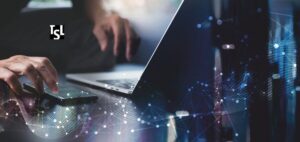The future of education is being shaped by transformative trends that promise to redefine how learning is delivered and experienced. As technology advances and societal needs evolve, educational institutions are adapting to provide students with the skills and knowledge required for success in the 21st century. This article explores the key trends that are poised to influence the classrooms of tomorrow, offering insights into the future of education.
Personalized Learning
One of the most significant trends in education is personalized learning. This approach tailors’ educational experiences to meet the individual needs, strengths, and interests of each student. By utilizing data analytics and adaptive learning technologies, educators can create customized learning paths that enhance student engagement and outcomes.
Personalized learning involves a variety of strategies, including differentiated instruction, project-based learning, and competency-based education. These methods allow students to progress at their own pace, ensuring they master fundamental concepts before moving on to more complex topics. This trend not only boosts academic achievement but also nurtures a deeper understanding and retention of knowledge.
Integration of Technology
The integration of technology in education is revolutionizing the classroom experience. From interactive whiteboards and tablets to virtual reality (VR) and artificial intelligence (AI), technology is providing new ways for students to engage with content and collaborate with peers. Digital tools are also enabling teachers to create more interactive and immersive learning environments.
For instance, VR can transport students to different historical periods or scientific environments, offering experiential learning opportunities that were previously unimaginable. AI-powered tutors and learning platforms can provide real-time feedback and personalized support, helping students to overcome challenges and achieve their academic goals.
Blended Learning Models
Blended learning models, which combine traditional face-to-face instruction with online learning, are gaining traction as a flexible and effective approach to education. These models offer the best of both worlds, allowing students to benefit from the personalized and self-paced nature of online learning while still receiving direct support and interaction from their teachers.
Hybrid classrooms, flipped classrooms, and rotational models are some examples of blended learning approaches. These models provide opportunities for students to access a diverse range of resources, collaborate on projects, and engage in interactive discussions, all of which contribute to a richer and more comprehensive educational experience.
Focus on Social and Emotional Learning
Recognizing the importance of social and emotional competencies in student success, schools are increasingly incorporating social and emotional learning (SEL) into their curricula. SEL programs aim to develop skills such as self-awareness, self-regulation, empathy, and relationship-building, which are essential for students to thrive both academically and personally.
These programs are designed to create supportive and inclusive school environments where students feel valued and understood. By cultivating a sense of belonging and emotional well-being, SEL initiatives contribute to improved academic performance, reduced behavioral issues, and enhanced overall school climate.
Emphasis on STEAM Education
STEAM education, which integrates science, technology, engineering, arts, and mathematics, is becoming a cornerstone of future-focused curricula. This interdisciplinary approach encourages students to think critically, solve complex problems, and engage in creative and innovative thinking.
By incorporating the arts into traditional STEM education, STEAM initiatives enrich a holistic understanding of subject matter and promote the development of a broad range of skills. These programs often involve hands-on projects, collaborative activities, and real-world applications, preparing students for careers in an increasingly technology-driven world.
Lifelong Learning and Skill Development
The concept of lifelong learning is gaining prominence as the pace of technological change accelerates. Educational institutions are recognizing the need to prepare students not only for their initial careers but also for a lifetime of learning and adaptation. This involves cultivating a mindset of continuous improvement and equipping students with the skills needed to thrive in a rapidly changing job market. Programs that focus on developing transferable skills, such as critical thinking, problem-solving, communication, and adaptability, are essential.
Inclusive and Diverse Learning Environments
Creating inclusive and diverse learning environments is a priority for educational institutions committed to equity and access. This trend involves ensuring that all students, regardless of their background, have equal opportunities to succeed. It includes implementing culturally responsive teaching practices, addressing biases, and providing support for students with diverse learning needs. By embracing diversity and promoting inclusivity, schools can create environments where every student feels valued and empowered.
Conclusion,
The future of education is being shaped by a variety of emerging trends that promise to transform the classroom experience. Personalized learning, the integration of technology, blended learning models, and a focus on social and emotional learning are just a few of the developments that are redefining how students learn and interact. By embracing these trends, educational institutions can create more engaging, inclusive, and effective learning environments that prepare students for the challenges and opportunities of the 21st century.


